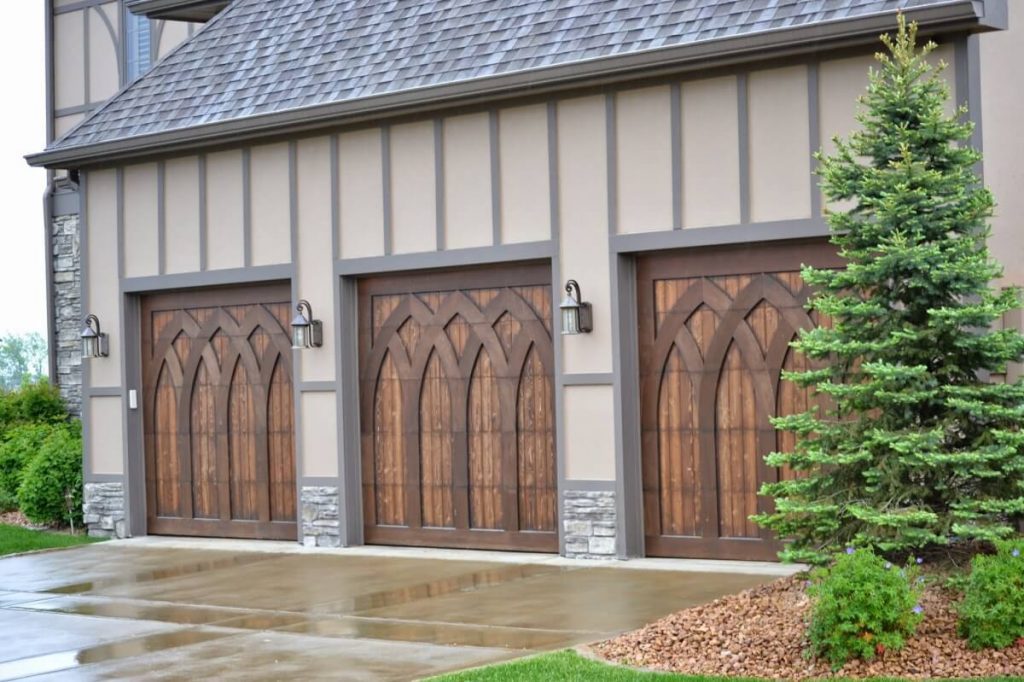Garage Door Safety
A garage door is the largest moving object in the home. They are often operated by automatic garage door openers. Proper installation, operation, maintenance, and testing are necessary to provide safe, trouble-free operation. An improperly adjusted garage door or automatic opener can exert deadly force when the door closes. This could lead to serious injury or death from being hit by a closing garage door or from being trapped under the door.
There are over 24,000 Serious Accidents per year involving a garage door in America that require an Emergency Room visit, according to the United States Consumer Product Safety Commission (USCPSC).
Safety is Everyone’s Business
A few simple precautions can protect your family and friends from potential harm. Please take a few minutes to read the following safety and maintenance information. Refer to your garage door and opener’s manual for details specific to the model you own. Then check the operation of your garage door and automatic opener.
Garage Door Openers are not Toys
Do Not stand or walk under a moving door! Do not let children or adults play “beat the door”. It is dangerous and can result in serious injury or death. Adults should set a good example. Know how to use the emergency release, in case someone is pinned by the door
Do Not let children play with or use the transmitters or remote controls. Always place and store them out of the reach of children.
The pushbutton wall control should be out of the reach of children (at least 5 feet from the floor) and away from all moving parts. Mount and use the button where you can clearly see the moving garage door.
Teach Your Children about Garage Door and Opener Safety
Garage door openers are not toys. Careless operation and allowing children to play with or use garage door opener controls can lead to tragic results. Discuss garage door safety with your children. Explain the danger of being trapped under the door.
When using the pushbutton or transmitter, keep the door in sight until it completely stops moving. Teach children never to play under or near an open garage door.
Teach children to keep their hands and fingers clear of section joints, hinges, tracks, springs and other door parts. Contact with a moving door or its hardware could cause serious injury. These injuries can also happen with garage doors that don’t have automatic openers.
Two Garage Door Springs Installed and Maintained
Many garage doors are installed with just one garage door spring and are considered dangerous and unsafe! If there is only one garage door spring installed on a 2 car garage door and the spring breaks, there is no other spring to carry the load. The builders often know there is a safety concern when installing a single spring, but choose to save money, and have the home owner pay to correct it later. There is no law against putting up just one spring, but I doubt many builders only have one spring in their families home.
DASMA SAFETY TIPS 
For Garage Door Openers
Here are some helpful safety tips. This list is not intended to be a comprehensive list of every safety precaution. Always consult your manufacturer’s installation or instruction manual for safety information about your model.
1. Do It Yourself? Installing a garage door opener is generally easier and safer than installing a garage door. But improper installation can create a hazardous situation. DASMA recommends that a trained door system technician install your opener. If you do it yourself, be sure to follow the manufacturer’s instructions carefully.
2. Not in Sight? Not Safe! When closing your automatic garage door with a push button or a remote control transmitter, you should always watch the door until it completely closes. Reason: Make sure no person or animal gets caught under a closing door. Take a few seconds to be safe.
3. Do You Have a Reinforcement Bracket? Some do-it-yourselfers neglect to install an opener reinforcement bracket to the top section of the door. Failure to do so can damage your door. Do-it yourselfers should check the installation manual for specific instructions.
4. Get a More Powerful Opener? If your door feels heavy or requires two hands to open it, the door is probably out of balance and needs adjustment. A variety of problems can cause this, and if you try to fix it yourself, you could get hurt. Call a local trained door systems technician to diagnose the problem and offer a solution. The answer is not a more powerful garage door opener. Openers are designed to open doors that are properly balanced.
5. Sensitivity Training. Garage door openers are designed to reverse direction when a descending garage door meets an obstruction. If your door does not reverse readily after contacting an obstruction, the opener’s sensitivity adjustment may be set improperly. This can create a dangerous situation. See your owner’s manual for how to adjust your opener’s sensitivity. DASMA recommends that a trained door systems technician perform this work.
6. Safety Reverse. Since 1993, all openers manufactured for the U.S. must include a second safety reversing feature such as photoelectric eyes. These are installed near the floor. Once the invisible beam is broken, the door reverses automatically. If your opener lacks a similar safety reversing feature, it’s time to get a new opener.
7. The Six-Inch Rule. The photo eyes mentioned above should not be installed higher than six inches above the garage floor. If the eyes are installed higher, a person or pet could get under the beam and not be detected by the photo eyes.
8. The Five-Foot Rule. The wall push button for your garage door opener should be mounted at least five feet above the floor, out of the reach of children. Running under a closing door can be a deadly game. Teach your children never to play with opening and closing the door.
9. Do You Know Where Your Remote Controls Are? For the reasons just mentioned, keep the remote controls for your openers where children cannot play with them. Warn children of the dangers of playing with the garage door. For security reasons, be sure to keep your remote controls locked up. If you park a car outside your garage, be sure to lock your car so that potential burglars cannot access your remote control and gain easy access to your garage.
10. Rolling Codes. Some thieves are able to “record” your transmitter’s signal. Later, after you’re gone, they replay that signal and open your door. However, if your transmitter (the remote control) has rolling code technology, the code changes after every use. This renders the thieves’ controls useless. Contact your garage door opener manufacturer or your local garage door dealer for more information.
Contact Precision
If you have any questions or would like to schedule an appointment for a Safety Inspection or Maintenance, please contact our 24/7 Live Operator at Precision.































